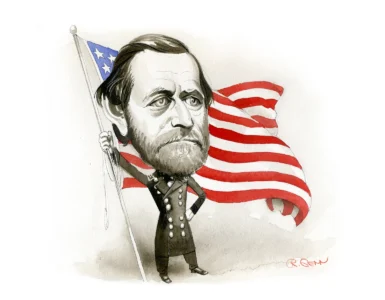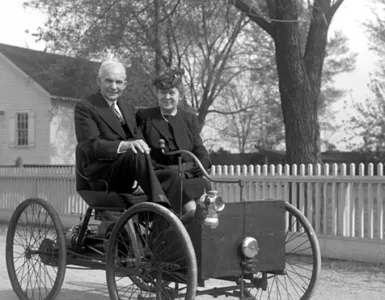Dr. Avul Pakir Jainulabdeen Abdul Kalam, widely known as Dr. A.P.J. Abdul Kalam, was one of the most influential figures in modern India. Born on October 15, 1931, in the small town of Rameswaram, Tamil Nadu, he rose from humble beginnings to become an exceptional scientist and the 11th President of India. Throughout his life, he inspired millions through his achievements in space and missile technology, his humility, and his constant encouragement to young minds to dream big. This article takes a closer look at Dr. Kalam’s journey, his achievements, and his everlasting legacy.
Early Life and Education
Abdul Kalam was born into a modest family in Rameswaram. His father, Jainulabdeen, was a boat owner who rented boats to local fishermen, and his mother, Ashiamma, was a loving homemaker. Despite their limited resources, the family was rich in values like honesty, discipline, and hard work, which Kalam always remembered. Since childhood, he had a curious mind and a great interest in learning new things.
To support his family, young Kalam woke up early to distribute newspapers, balancing work and studies effortlessly. He was a diligent student and always performed well academically. After completing school at Schwartz Higher Secondary School in Ramanathapuram, he went on to study physics at St. Joseph’s College in Tiruchirappalli. However, his love for flying and aeronautics led him to pursue aerospace engineering at the Madras Institute of Technology (MIT). It was there that Kalam decided to become a scientist and use his knowledge to serve the nation.
A Scientist with a Mission
After graduating from MIT in 1958, Abdul Kalam began his career as a scientist at the Defense Research and Development Organization (DRDO). He started by working on small hovercraft projects, but his true potential was yet to shine. It wasn’t until he joined the Indian Space Research Organisation (ISRO) in 1969 that Kalam’s career truly took off.
At ISRO, Kalam played a major role in the development of India’s first Satellite Launch Vehicle (SLV-III), which successfully launched the Rohini satellite into space in 1980. This achievement was a huge milestone for India, marking the country’s entry into the league of spacefaring nations. Kalam’s vision and hard work at ISRO laid the foundation for many future space missions.
The “Missile Man of India”
Abdul Kalam’s contributions weren’t just limited to space technology. In the 1980s, he moved back to DRDO to lead the Integrated Guided Missile Development Program (IGMDP), which aimed to develop a range of strategic missiles. Under his guidance, several missiles were successfully developed and tested, including the Prithvi and Agni missiles. Prithvi was a short-range missile designed for use by the Indian Army, while Agni was a long-range ballistic missile that greatly enhanced India’s defense capabilities.
Due to his pivotal role in developing India’s missile technology, Kalam became known as the “Missile Man of India.” These achievements weren’t just technological milestones; they were also symbols of India’s growing strength and self-reliance in defense.
A Leader in India’s Nuclear Program
In addition to his contributions to missile technology, Abdul Kalam played a key role in making India a nuclear power. He was a crucial part of the team that conducted the successful Pokhran-II nuclear tests in 1998. These tests demonstrated India’s nuclear capabilities to the world, further establishing the country as a powerful nation. Kalam’s involvement in these tests made him a national hero and solidified his reputation as one of India’s greatest scientific minds.
Becoming the President: The “People’s President”
In 2002, Dr. A.P.J. Abdul Kalam was chosen as the 11th President of India. His election was widely welcomed, as he was a non-political figure who was known for his humility, wisdom, and patriotism. Serving from 2002 to 2007, he was often called the “People’s President” because of his genuine connection with ordinary citizens, especially the youth.
Instead of being a formal, detached leader, Kalam actively engaged with students across the country, believing that they were the future of India. He visited countless schools and colleges, delivering speeches that inspired young minds to dream big, work hard, and contribute to the nation’s progress. One of his most famous quotes is, “Dream, dream, dream. Dreams transform into thoughts, and thoughts result in action.” His presidency was marked by warmth, compassion, and a vision to see India progress.
A Life of Humility and Simplicity
Even as the President of India, Abdul Kalam lived a simple life. He wore modest clothes, never sought luxury, and maintained a humble demeanor throughout his life. His modesty and down-to-earth nature earned him love and respect across all sections of society. Despite holding the highest office in the country, he remained approachable and connected with the common people.
When his term ended in 2007, Dr. Kalam chose not to seek a second term. Instead, he returned to what he loved the most – teaching. He became a visiting professor at several universities and educational institutions, continuing to inspire students and contribute to the growth of young minds.
Kalam’s Books and Inspirational Works
Abdul Kalam was also a prolific writer, penning down several books that have inspired readers across generations. Some of his most famous books include:
- “Wings of Fire”: An autobiography that details his life journey, struggles, and achievements.
- “Ignited Minds”: A book that aims to motivate the youth of India to take charge of their destiny and work towards a prosperous future.
- “India 2020”: A vision document outlining his dreams for a developed India by the year 2020.
- “My Journey: Transforming Dreams into Actions”: A memoir where Kalam shares personal stories and experiences from his life.
These books reflect his passion for India’s progress and his deep belief in the power of education and dreams.
Kalam’s Recognitions and Awards
Over his lifetime, Dr. Abdul Kalam received numerous awards for his contributions to science, technology, and society. Some of his most prestigious honors include:
- Bharat Ratna (1997): India’s highest civilian award for his remarkable contributions to science and public life.
- Padma Bhushan (1981) and Padma Vibhushan (1990): Both are among India’s highest civilian awards, recognizing his achievements in aerospace and defense.
- Hoover Medal (2009): An American award given to engineers who contribute to the welfare of humanity.
These accolades are a testament to his dedication, brilliance, and immense impact on India’s progress.
Kalam’s Final Moments and Legacy
Dr. A.P.J. Abdul Kalam passed away on July 27, 2015, while delivering a lecture at the Indian Institute of Management (IIM) Shillong. He collapsed due to a cardiac arrest and left this world doing what he loved the most – interacting with young minds. His death was a huge loss to the country, and people from all walks of life mourned the passing of a great visionary, scientist, and leader.
Kalam’s legacy lives on, not just in the form of India’s advancements in science and defense but in the hearts of millions who were inspired by his life and words. He believed in a developed and self-reliant India, and he saw the youth as the driving force for that future. His thoughts on dreaming big, working hard, and making a difference continue to guide and inspire generations of Indians.
Conclusion
Dr. A.P.J. Abdul Kalam’s life is a true example of how determination, hard work, and a vision can transform not only one’s own life but also the future of an entire nation. From a small town in Tamil Nadu to the corridors of the Rashtrapati Bhavan, his journey is a story of overcoming challenges and making a lasting impact.
Known as the “People’s President” and the “Missile Man,” Dr. Kalam’s achievements in science, his humble lifestyle, and his dedication to inspiring youth will continue to motivate and guide India for generations to come. His dream for a developed India and his constant encouragement to the youth to chase their dreams will always remain a beacon of hope and inspiration.





Add comment